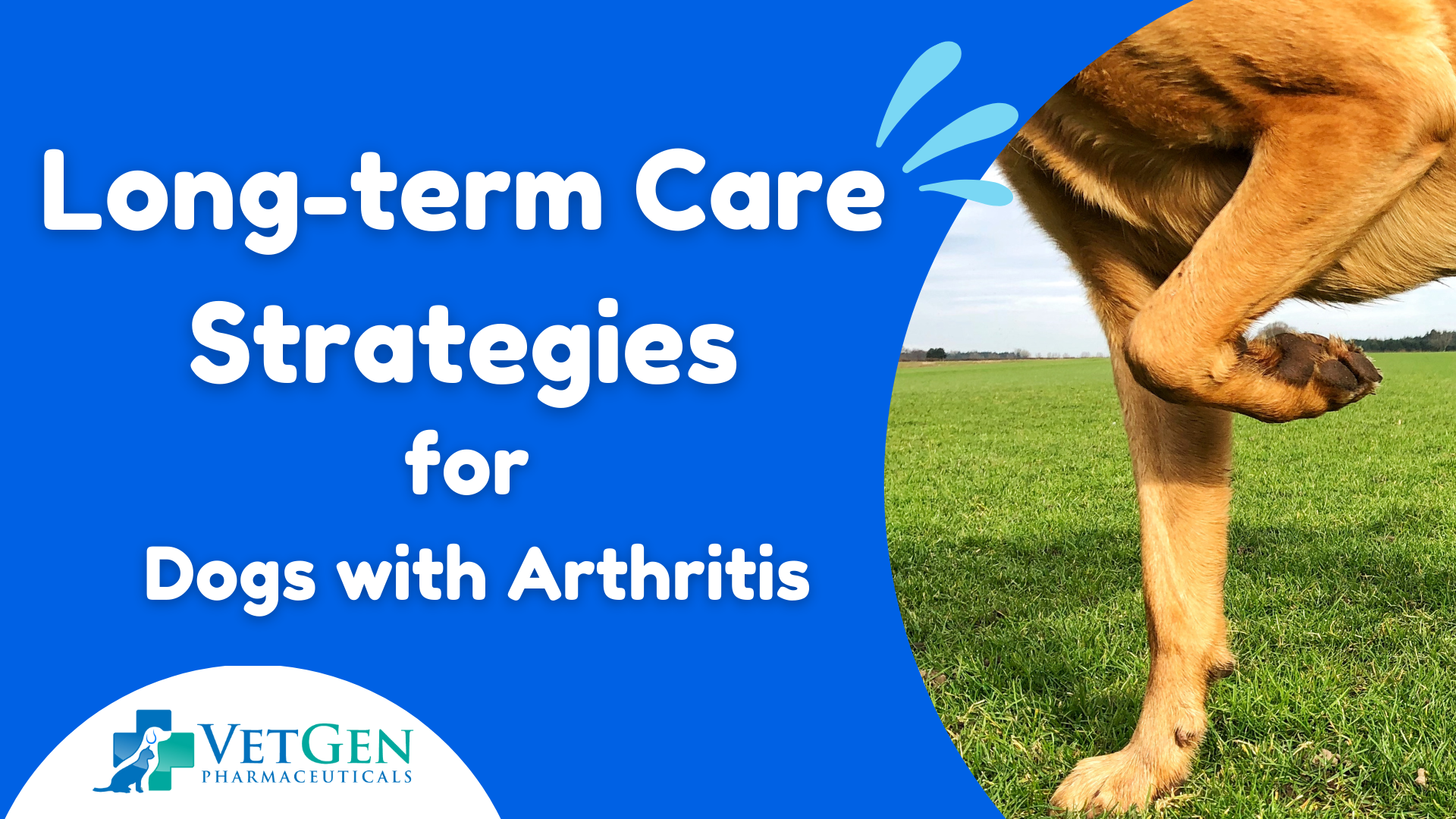Table of Contents
As the dog grows older, he is likely to develop arthritis, a disease that affects cartilage and develops bone spurs around the affected area. This progressive disorder begins with dull aching in the affected area and progresses to inflammation and stiffness, which severely limits one or both hind legs and, thus, the dog’s mobility. Dog Arthritis cannot be healed, but it can be controlled through various measures available. Osteoarthritis (OA) is especially prevalent, and surveys show that approximately 20% of dogs older than one have OA.
Understanding Dog Arthritis
Dog Arthritis is also referred to as osteoarthritis or degenerative joint disease (DJD), which is a disease that impacts the joints of dogs. It is a condition that affects the joints as the cartilage that acts as the shock absorber wears out, causing pain, inflammation, and reduced mobility. When cartilage wears out, bones may grow out into the joint space to form spurs that increase the pain. Identifying the symptoms of arthritis in dogs is very important to treat the condition. Common symptoms include:
- Limping dog or favoring one leg
- Difficulty rising or lying down
- Stiffness, especially after rest
- Reluctance to jump or climb stairs
- Decreased activity or playfulness
- Visible discomfort or pain when touched
Top 6 Effective Long-Term Care Strategies for Managing Dog Arthritis
It is always advisable to seek the services of a veterinarian if you feel that your dog might be suffering from arthritis. They will be able to confirm the diagnosis and assist with planning the subsequent course of action. The objectives of any arthritis treatment are to reduce pain, prevent further wear and tear between the joints, and enhance mobility. Sometimes, it may even require applying many different therapies to help your dog out.
Weight Management
Weight control is important to dogs suffering from arthritis. Obesity adds extra pressure to joints and muscles, thus increasing pain and inflammation in the afflicted regions. Your vet will advise on the best weight loss regime if your dog is overweight.
However, it is important to note that even if the dog is not fat, it still needs to be exercised and fed well to maintain its ideal size. It is also important to ensure that the dog eats the right foods that will help it control its weight and strengthen its bones.
Physical Therapy
Certified physical rehabilitation programs can help dogs with joint pain. These programs are individualized for your dog, taking into account his or her needs and objectives, which are to increase mobility and decrease pain.
Some of the activities that may be used include stretching, range of motion exercises, walking with and around obstacles, swimming, and underwater treadmill walking. A professional will be there to monitor the therapy for Dog Arthritis and guide the process, but you may be taught specific exercises to practice on your own.
Arthritis Injections
The FDA authorized Librela (bedinvetmab injection), a novel drug, in May 2023 to treat arthritis in dogs. This medication works by blocking a protein linked with arthritis pain so it cannot send signals to the brain to alert it of the pain. Librela is an injectable, and it has to be given once a month by a vet. It is effective but has side effects like urinary tract infections, skin irritation, and vomiting.
Supplements
Joint supplements for dogs can assist in rebuilding cartilage, which in turn increases joint fluid and decreases inflammation. Therefore, the use of supplements may result in an improvement within six weeks.
Fish oil’s omega-3 fatty acids are useful in managing and controlling joint inflammation. Another possibility is the administration of polysulfated glycosaminoglycan (PSGAG) injections, which have a faster and more prolonged action compared to tablets. Other possibilities are platelet-rich plasma, stem cell therapy, steroids, and hyaluronic acid injections.
Heat and Cold Therapy
Rubbing an ice pack on the affected areas after exercise or on days when your dog is stiffer and arthritic can also be useful. Don’t place the ice pack directly on the skin; it is always wise to cover the ice pack with a towel. Heat therapy, like that provided by a warm towel, can help the muscles relax and become more limber while cutting down on pain. Pre-exercise is the most suitable time to apply heat to the affected part of the body.
Surgery
In some cases, your veterinarian may recommend that surgery be performed to correctly treat your dog’s arthritis. Depending on the cause, arthritis can be treated with surgery that helps repair the joint and slows down the development of the disease, especially if the arthritis results from an injury such as the cranial cruciate ligament (CCL). Depending on the degree of Dog Arthritis and the joints affected, your veterinarian will advise you on the proper surgical procedures.
Conclusion
Dog Arthritis needs to be addressed comprehensively to help reduce pain and enhance the lives of affected animals. The key to successful management is evaluating your dog’s response to treatment and communicating with your veterinarian. Weight control, exercise, medications, and other therapies will allow your arthritic dog to live a more comfortable and happy life.
Frequently Asked Questions
1. Can I give my dog human glucosamine supplements?
It is not advised to feed human supplements to dogs because the dosage and presentation vary. Dog skin and coat care products should be used, and these should not be replaced with human products.
2. Are there any dietary changes that can help manage my dog's arthritis?
Indeed, dietary changes may bear a significant contribution to the management of arthritis in dogs. A diet containing foods rich in omega-3 fatty acids, antioxidants, and other anti-inflammatory nutrients should be consumed to minimize inflammation of the joints and keep the joints healthy.
Reference:
https://www.goodrx.com/pet-health/dog/dog-arthritis-tips-treatment-relief
https://www.petmd.com/dog/general-health/dog-arthritis-treatment-how-to-help-a-dog
https://www.rspcapetinsurance.org.au/pet-care/health-and-wellbeing/how-to-treat-arthritis-in-dog
https://www.akc.org/expert-advice/health/dealing-with-canine-arthritis/








